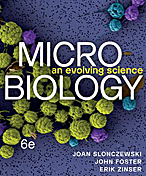Photorhabdus luminescens Toxins as Therapeutic Agents: Difference between revisions
No edit summary |
No edit summary |
||
| Line 18: | Line 18: | ||
<br>Introduce the topic of your paper. What is your research question? What experiments have addressed your question? Applications for medicine and/or environment? | <br>Introduce the topic of your paper. What is your research question? What experiments have addressed your question? Applications for medicine and/or environment? | ||
<i>Photorhabdus luminescens<i> is a gram negative pathogenic bacteria that engages in a symbiotic relationship with nematodes. P. <i>luminescens<i> is the only known terrestrial bacteria that performs bioluminescent reactions. P. <i>luminescens<i> are a part of the photorhabdus genus of the <i>Enterobacteriaceae<i> family. There are three species of <i>Photorhabdus<i>,with two of them living in nematodes, and the third has been found in human wounds. | <i>Photorhabdus luminescens<i> is a gram negative pathogenic bacteria that engages in a symbiotic relationship with nematodes. P. <i>luminescens<i> is the only known terrestrial bacteria that performs bioluminescent reactions. P. <i>luminescens<i> are a part of the photorhabdus genus of the <i>Enterobacteriaceae<i> family. There are three species of <i>Photorhabdus<i>,with two of them living in nematodes, and the third has been found in human wounds. P. <i>luminescens<i> is interesting as a microbe because it engages in symbiotic and pathogenic activities. In terms of symbiosis, P. <i>luminescens<i> lives in the gut of nematodes until the nematode infects a small insect like caterpillars. Once in the caterpillar, the nematode releases P. <i>luminescens<i>, where it releases a variety of toxins to kill the organism and provide nutrients for itself and for the nematode. These toxins are being looked at as potential therapeutic agents because of their efficacy as antimicrobial agents. | ||
<br> | <br> | ||
Sample citations: <ref name=aa>[http://www.plosbiology.org/article/fetchObject.action?uri=info%3Adoi%2F10.1371%2Fjournal.pbio.1000005&representation=PDF Hodgkin, J. and Partridge, F.A. "<i>Caenorhabditis elegans</i> meets microsporidia: the nematode killers from Paris." 2008. PLoS Biology 6:2634-2637.]</ref> | Sample citations: <ref name=aa>[http://www.plosbiology.org/article/fetchObject.action?uri=info%3Adoi%2F10.1371%2Fjournal.pbio.1000005&representation=PDF Hodgkin, J. and Partridge, F.A. "<i>Caenorhabditis elegans</i> meets microsporidia: the nematode killers from Paris." 2008. PLoS Biology 6:2634-2637.]</ref> | ||
Revision as of 02:30, 17 March 2021
Section

By [Oliver Kendall]
At right is a sample image insertion. It works for any image uploaded anywhere to MicrobeWiki.
The insertion code consists of:
Double brackets: [[
Filename: PHIL_1181_lores.jpg
Thumbnail status: |thumb|
Pixel size: |300px|
Placement on page: |right|
Legend/credit: Electron micrograph of the Ebola Zaire virus. This was the first photo ever taken of the virus, on 10/13/1976. By Dr. F.A. Murphy, now at U.C. Davis, then at the CDC. Every image requires a link to the source.
Closed double brackets: ]]
Other examples:
Bold
Italic
Subscript: H2O
Superscript: Fe3+
Introduce the topic of your paper. What is your research question? What experiments have addressed your question? Applications for medicine and/or environment?
Photorhabdus luminescens is a gram negative pathogenic bacteria that engages in a symbiotic relationship with nematodes. P. luminescens is the only known terrestrial bacteria that performs bioluminescent reactions. P. luminescens are a part of the photorhabdus genus of the Enterobacteriaceae family. There are three species of Photorhabdus,with two of them living in nematodes, and the third has been found in human wounds. P. luminescens is interesting as a microbe because it engages in symbiotic and pathogenic activities. In terms of symbiosis, P. luminescens lives in the gut of nematodes until the nematode infects a small insect like caterpillars. Once in the caterpillar, the nematode releases P. luminescens, where it releases a variety of toxins to kill the organism and provide nutrients for itself and for the nematode. These toxins are being looked at as potential therapeutic agents because of their efficacy as antimicrobial agents.
Sample citations: [1]
[2]
A citation code consists of a hyperlinked reference within "ref" begin and end codes.
To repeat the citation for other statements, the reference needs to have a names: "<ref name=aa>"
The repeated citation works like this, with a back slash.[1]
Section 1
Include some current research, with at least one figure showing data.
Every point of information REQUIRES CITATION using the citation tool shown above.
Section 2
Include some current research, with at least one figure showing data.
Section 3
Include some current research, with at least one figure showing data.
Section 4
Conclusion
References
Authored for BIOL 238 Microbiology, taught by Joan Slonczewski, 2021, Kenyon College.
